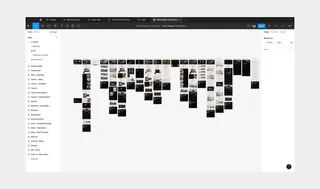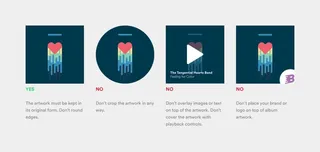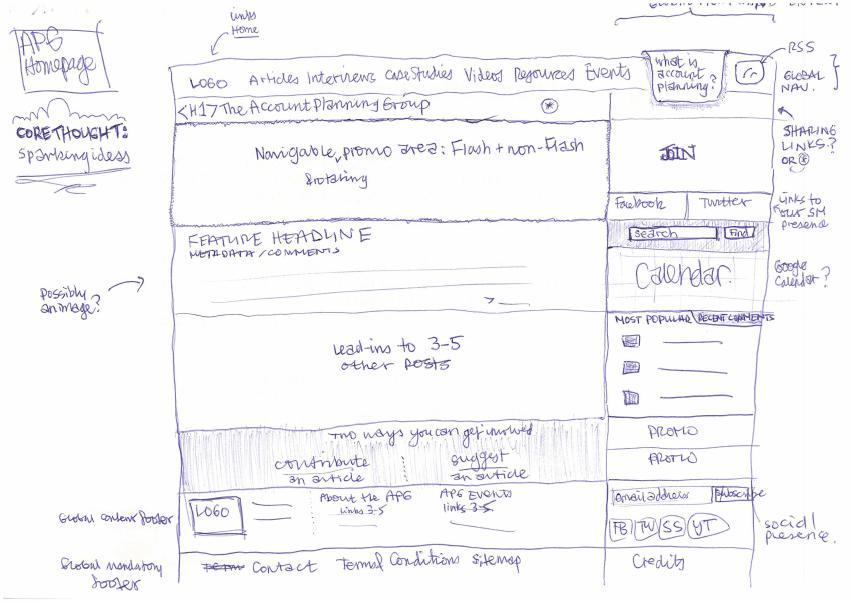What is a Web Design Agency?


The term ‘web design agency’ is often thrown around in today’s digital-led world. Everyone has a vague idea of what a web design agency does. But what does web design actually involve? It’s much more in-depth than putting your brand colours and logo on some page templates. The psychology of web design runs deep, and if you want a successful website that speaks to your audience, you need to find a web design agency that understands this.
Top Design Firms reported in 2021 that 50% of consumers believe website design is vital to any company’s brand image. That’s not even a surprising statistic these days. It’s more surprising that half the general public didn’t think a website is vital to a company’s brand image. This article will explain what a web design agency is, what it does, and how to hire one.
The difference between web design and web development is not always clear, especially if you’re not experienced in the industry. In fact, these two disciplines are concerned with entirely separate components of creating a website.
Here’s a brief overview of the difference between web design and web development.
| Web Design | Web Development |
| What is seen on the screen when you visit a website. | The unseen functions that make the website work. |
| Concerned with the style and aesthetic of the website. | Ensures styles and aesthetics can be seen and experienced in the ways intended. |
| Uses tools like Figma and Adobe Creative Suite. | Uses tools like HTML, CSS, and Javascript. |
| Driven by creativity, imagination, and intuition. | Driven by logic, practicality, and analysis. |
Most agencies provide both web design and web development services because they are so entwined with one another. eCommerce websites are examples of how web design and web development work hand in hand. Research on consumer insights from Google found that 85% of customers say images and information are essential when deciding which brand to buy from.
It’s no secret that a well-designed page on an eCommerce website entices consumers to buy more. But it must also be clearly and intuitively laid out to naturally guide the user and help them find the information they seek, like related products, sizes and colours, and price. Then there’s no point in designing anything if the page can’t function well and allow users to browse and buy with ease. Creating catalogues and inventories, maintaining secure payment platforms, shopping carts, promotional codes, and so on all come down to the web developer.
The same report found that 59% of customers said that being able to shop on their mobile was also important in the decision-making process. A web designer and developer both work together to create the mobile version of an online shop so that it’s easy and pleasurable to use.
While it’s not the responsibility of a web designer to know how to use HTML, CSS, and Javascript, understanding what they are for and how they work helps them create wireframes and design concepts that enter the development phase more naturally. Most web designers are also proficient in using content management systems (CMS) such as Craft CMS and WordPress. CMS allow untrained users to create web pages using a page builder tool that doesn’t require writing code.
Although usually more technically driven, web developers also generally understand user experience. This component drives web design to be user-focused and helps guide a person naturally around a website with visual cues.
Whatever the skills involved, it’s helpful to have a direct line between the web designer and web developer to ensure communication is clear and tweaks can be ironed out along the course of the project.
If you’re considering becoming a web designer or web developer, find some helpful guidance in our blog.
Looking at the role of a web designer in a bit more detail, it’s a much more complex position than simply ‘making a website look good’. It’s the responsibility of the web designer to understand all aspects of a brand’s visual identity and weave them into a website that lives and breathes that brand. But the designer will also be considering:
Graphic designers are trained in software like Photoshop, Illustrator, Indesign, and Sketch. But web designers will also use tools like Figma, a prototyping tool used to mock-up web page designs, and HotJar, a behaviour analytics tool to help them understand where users frequently move their cursors and click on a page.

Web design needs to combine brand aesthetics with the right psychology to produce a design that not only looks good but can be used intuitively. This gives the brand the best possible chance of keeping its audience engaged. The web designer will need to communicate with web developers to understand the opportunities and limitations of the website build. They may also need to speak to the SEO team to incorporate elements of visually-led on-page SEO.
Some web design agencies only offer web design as a service, meaning you will need to instruct a web developer to build the website. But quite often, the term ‘web design agency’ is used to describe an agency that handles design and development. Because of this, we’ll refer to a ‘web design agency’ as one that does both in this section.
In a web design agency, usually, you will find web designers, web developers, account managers, and directors or company owners. The agency might also include other departments like SEO, UX and UI design, and app development. The account managers manage project work and act as communicators and facilitators between clients and designers. However, designers will speak to clients directly throughout the project too in order to get a clear understanding of their brand, objectives and feedback.
A web design agency will offer a range of services besides web design, including
An agency will also offer a selection of digital design assets in addition to your website, some of the most common ones being:

Image source: Spotify
Web design agencies might also offer print design services to produce assets such as billboard adverts, magazine adverts, packaging, and livery.
When a business chooses to work with a web design agency, they hand over not only the money needed to design a website but the reputation of their brand. There must be a high degree of trust in this relationship for the project to succeed. Web designers must treat every project with the clients’ best interests at heart, not only to produce a good quality result but to uphold their own reputation in the industry. A web designer must:
Returning to the 50% of consumers that thought a website was essential for brand image, if you delve deeper into Top Design Firms’ research, a lot is going on in a consumer's mind when they see a website for the first time. 39% said that colour is the most important visual element, 38% take in the layout and search for navigational links when visiting a website for the first time, and 31% said that good quality user experience is the top priority in the design.
It’s said that it only takes 0.05 seconds for someone to make a judgement of a website, so brands have their work cut out for them to impress quickly and keep visitors on their site. Here are some factors that rely on good website design.
Your website is one of the most prominent assets in your brand portfolio. Your website's design must exude your brand's identity and personality. A web designer will do this using your brand design guidelines and apply fonts, colours, shapes, movement, and other elements to create an overall visual tone that aligns with your brand message and personality.
When people in your target audience discover your brand, one of the first things they do is look you up online to see your website. Imagine if they didn’t find anything, or worse, if they visited a website that didn’t look like your brand, took a long time to load, and wasn’t easy to navigate or understand. You have one chance to make a good first impression.
Similar to the above, your website needs to be easy to find, which requires SEO optimisation. A good web design and development agency will know how to design a website that can easily be optimised. This affects how quickly your website loads when someone clicks on it and even how far up on the first page of google it appears.
Knowing where you sit in relation to your competition is one of the most powerful pieces of information you have as a brand. A web design agency’s job is to get a key understanding of your competitors and how you measure up. It should also have the skills to push you beyond what your competitors are achieving with their websites.
Ultimately, this is the main goal of business. Good website design makes it easier for your target audience to perceive and understand your brand, find out important information about you, and buy products and services.

Although no two projects are the same, the process of creating a website follows the same general steps.
The initial stage consists of data gathering and discussion between the client, web designer, and anyone involved in the project. The agency owner and project account manager are usually in this initial meeting too.
The team will need to know the website's business objectives. The agency will likely produce a proposal document to present to the client, showing suggestions and using visual examples to understand what the client likes and does not like. This could include samples of design work, examples of previous work, and examples of other websites with a similar aesthetic.
The web designer will create a set of wireframes. A wireframe is like a blueprint of a web page showing the design but without the functions added yet. These will be incorporated at the development stage. This is a way to show the client how the design will look before coding the website, and it’s at this stage that tweaks and changes can be made. Figma is the most popular web design software used to create wireframes.
At the next step, the web developer will build the website using the wireframes. During this process, functions like animations, rollovers, and links will be added to the website. The designer might use plugins or write code for features such as an interactive map on your contact page, a shopping cart on an eCommerce website, or structured data markup capabilities for SEO.
Once the website is built, it needs to be populated with content. The agency will strategically go through the website, adding images, videos, and text that has been pre-agreed with the client.
The final stage is testing. This is one of the most important steps, as the website will need to go through quality control before being pushed live and made available for public access. The agency team will move through the website pages, ensuring that every button works and every image loads correctly.
Those looking for a new website have a few different options ahead of them: a web design agency, a freelance web designer, or an in-house designer. Here are those options compared:
| Type | Pros | Cons |
| Freelance | Direct line to the designer at all times, no need to go through an account manager. | Less expertise than an established team. Potentially irregular communication. |
| In-house | Essentially a part of your team, fully engaged with and understanding of the brand. | Most expensive option. May not require their skills all the time. |
| Agency | Access to a team of skills and experience. Most on-trend web design industry knowledge. | Can be expensive. Can be time-consuming to find the right agency for you. |
Generally, a web design agency is your most reliable way to get a high-quality, high-functioning website. As a team, an agency is stronger than one individual because it is made up of several industry professionals who all work together on a daily basis.
Agencies range from affordable to expensive, there’s no set price for a website, but usually, they will try to produce options within your budget that make the most of the money you want to spend.
Choosing a web design agency should never be rushed. There are over 2,000 web design agencies in the UK. It’s vital you find the right fit if you want your project to be a success. A less-than-desirable outcome doesn’t always mean your chosen agency couldn’t measure up. Myriad factors come into play, such as their previous experience and specialisms. Even how well you get along with the team and share a common vision has an impact.
Here are some fundamentals that every business owner must look for when they research web design agencies.
The last but perhaps most important point is how well you gel with the team. Getting along makes the experience more fun and eases communication, helps you to see eye to eye on the different components and stages of the project, and makes for a better overall result.
Hello, I'm Natasia, and I'm a content writer for Shape.